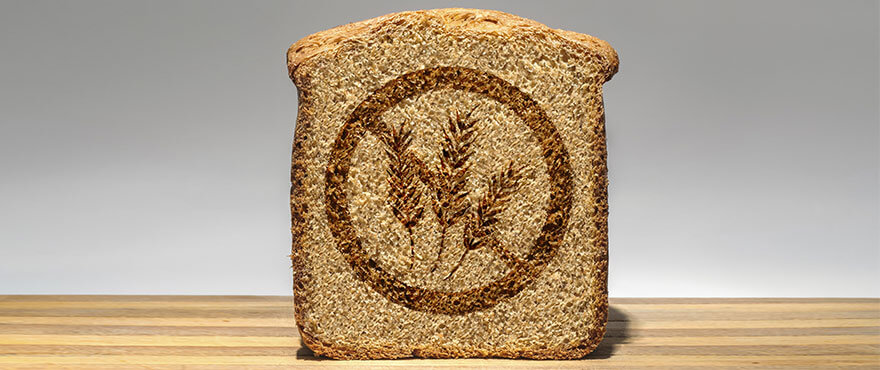
Gluten-Free Eating – Awareness & Understanding
Celiac Disease is a genetic condition that causes the body’s small intestine to be damaged by gluten. When people continue to eat gluten, this results in poor nutrient absorption and failing health.1 People who are gluten sensitive have a variety of symptoms when eating gluten-containing foods, such as abdominal pain, dizziness, fatigue – however, they are not celiac (not the same damage to the intestines).2
If you or someone in your family is diagnosed with any of these conditions, the only treatment option is to follow a strict gluten-free diet.1 This requires a lot of patience and being compassionate about the needs of those following the gluten-free diet.
Here are some tips the entire family needs to ensure their food is safe:
Know what Gluten is!
It is important to be clear on what exactly you’re avoiding when you follow a gluten-free diet. Gluten is a protein found in certain grain products, including wheat, rye, triticale and barley.1 Knowing these grains will be useful when looking at food labels.
Labels & Regulations:
It is extremely important that you learn the regulations and labels that will help you identify whether a product is gluten-free.
Health Canada has specific regulations that allow products to carry a “gluten-free” claim. In Canada, products that display a “gluten-free” claim must have gluten levels of less than 20 parts per million due to cross contamination, which is recognized as safe for people with celiac to consume.3
You may also see a logo from the Canadian Celiac Association’s (CCA) Gluten-Free Certification Program on food packages. Any product with a CCA logo has been produced in a facility that is routinely audited to ensure products are within safe levels of gluten.4
Some other important things to note are ingredients that may and/or contain gluten.5
These include the following:
- Seasonings
- Extenders/thickeners
- Sauces
- Malt
- Modified food starch/gelatinized food starch
- Hydrolyzed food starch (i.e. Hydrolyzed Vegetable Protein)
- Milk (If malted)
- Flavourings
- Oats (possibly cross-contaminated with gluten during processing)
Avoiding Cross Contamination
To make sure your food stays gluten-free, you must take extra precaution to avoid cross contamination when cooking:
- Use a special set of kitchen equipment (including a separate toaster) and utensils for gluten-free cooking. Label these items so the entire family is aware of their use.5
- Do gluten-free baking before baking with wheat as flour in the air could contaminate the gluten-free baked goods6
- Ensure you properly wash all surfaces that have come in contact with non-gluten free foods6
- Be cautious when purchasing gluten-free flours from a bulk food store – there’s an increased risk of cross-contamination because bins are not sealed.6
- When breading chicken/meat for gluten-free cooking, do not re-use oil that has cooked standard breaded or battered products.7
Gluten-Free Cooking
Although a gluten-free diet is restrictive, you are still able to enjoy delicious foods and flavours.
- Bread chicken with gluten-free flours such as soy flour and potato starch or gluten-free crackers7,8
- Use gluten-free flour mixes as they tend to have a better texture than a single gluten-free flour8
- Enhance the flavour of natural gluten-free foods like rice with gluten-free spices
- Treat yourself to a gluten-free Cookbook and start experimenting in the kitchen!
- Keep track of your receipts when grocery shopping. Since many gluten-free products are often considered “specialty” and more expensive. The Canadian Government allows people with celiac or gluten intolerance to claim part of the costs used to purchase them. See this link for more information.
Finally, try some of these yummy gluten-free chicken recipes that are sure to please!
References
- Canadian Celiac Association. (2011). About Celiac Disease. Retrieved Dec 2, 2013, from http://www.celiac.ca/b/?page_id=882
- Canadian Celiac Association. (2011). Gluten Sensitivity. Retrieved Dec 2, 2013, from http://www.celiac.ca/b/?page_id=882
- Health Canada. (2012). Health Canada’s Position on Gluten Free Claims. Retrieved Dec 2, 2013, from http://www.hc-sc.gc.ca/fn-an/securit/allerg/cel-coe/gluten-position-eng.php#a2
- Canadian Celiac Association. (2011). Certification. Retrieved Dec 2, 2013, from http://www.celiac.ca/b/?page_id=1711
- Hlywiak, K. (2008). Hidden Sources of Gluten. Practical Gastroenterology, (2), 27-39
- Canadian Celiac Association. (n.d.). Excerpt from the Canadian Celiac Association, New Member Kit.
- S. Saville, RD, Personal Communication, December 3, 2013
- Hamilton Health Sciences: Patient Education. (2008). Gluten-free Recipe Substitutions – Diabetes & Celiac Disease. Retrieved December 3, 2013, from https://www.hamiltonhealthsciences.ca/wp-content/uploads/2019/08/CeliacDiseaseGlutenFreeRecipeSubstitution-trh.pdf